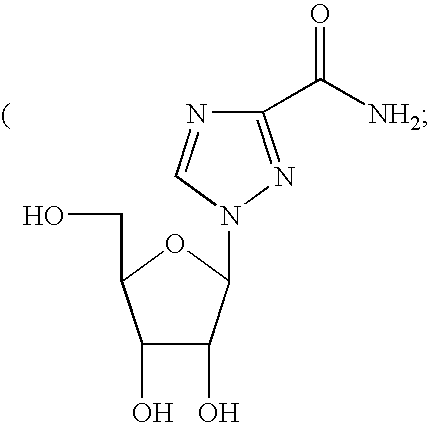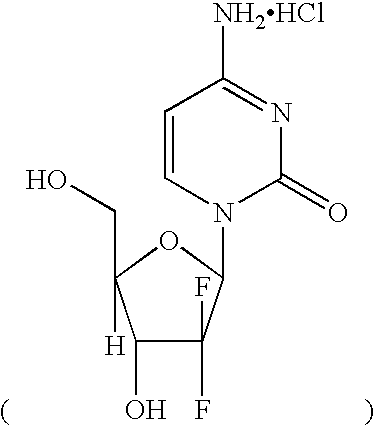Peptide viral entry inhibitors
a technology of entry inhibitors and peptides, applied in the direction of depsipeptides, peptide/protein ingredients, antibody medical ingredients, etc., can solve the problems of unfavorable viral entry step study, unwanted side effects, and ineffective current therapies in all patients, so as to prevent infection of the host
- Summary
- Abstract
- Description
- Claims
- Application Information
AI Technical Summary
Problems solved by technology
Method used
Image
Examples
example 1
Identification and Characterization of Inhibitory E1-E2 Peptides
[0241] Expression of HCV envelope protein. The envelope region of HCV was PCR amplified from FKI389 / core3′ plasmid (Pietschmann et al., J. Virol. 76(8):4008-21 (2002)) with the primers GATCAAGCTTATGGGTTGCTCCTTTTCTATCTTC (SEQ ID NO: 140) and GATCAGATCTAGTGATAATCCGGAGTCGAACTCGATAGTC (SEQ ID NO: 141). The amplified product was digested with HindIII and XbaI and ligated into the pCMV-hygro (Invitrogen Corp.; Carlsbad, Calif.). The expression of the envelope proteins was confirmed with Western blot.
[0242] HCV pseudotype particle generation. Single cycle HCV pseudoparticles are composed of a replication-defective HIV genome and HCV envelope proteins. These pseudoparticles were made by transfecting 293T cells with 5 ug of each pNL43E-R-luc (Chen et al., J Virol. 68(2):654-60 (1994)) and plasmid expressing HCV envelope proteins pCMV / E1-2 with profection transfection kit from Promega (Madison, Wis.). The medium was refreshed 1...
example 2
The Combinational Effects of an Anti-CD81 Antibody and the Peptide of SEQ ID NO: 77 on HCV Pseudoparticle Entry
[0250] This example demonstrated that the peptide of SEQ ID NO: 77 can enhance the potency of an anti-CD81 antibody and reduce the amount of anti-CD81 antibody that is needed to achieve HCV entry inhibition. The anti-CD81 antibody and the peptide were titrated in duplicates in a 96-well formatted matrix and tested in an HCV pseudoparticle entry assay. The assays were carried out essentially as described above. The data are shown below in the table 7.
TABLE 7Results of HCV pseudoparticle entry assay in the presence of thepeptide of SEQ ID NO: 77 and an anti-CD81 antibody.peptideug / mlCD81 antibody10010025256.256.251.5631.5630.391ug / mlRLURLURLURLURLURLURLURLURLURLU10RLU1154911598128111RLU15132260976218382693920.5RLU425237846554763937988614215050.25RLU89520561329449171612861177186331720.125RLU2022264619721953302830335729399058470.063RLU24901686286633104473406365954999101370.0...
example 3
Steps of HCVpp Entry Affected by the Peptide
[0267] To identify if the peptides of the invention bind to the cells and therefore inhibit entry, anti-CD81 antibody or peptide (SEQ ID NO: 77) was tested at four conditions: [0268] (A) peptide or anti-CD81 antibody was pre-incubated with cells and virus separately, cells were washed and virus together with peptide was added; [0269] (B) peptide or anti-CD81 antibody was pre-incubated with virus only first and then virus together with peptide was added to the cells; [0270] (C) peptide or anti-CD81 antibody was preincubated with cells only and washed off, and then virus was added; and [0271] (D) same as C except that virus was washed off after 1 hour of incubation.
[0272] Realizing that during virus incubation, the pre-bond peptide or antibody could dissociate from the cells and therefore lose the effects on HCVpp entry, virus was removed at time points from 15 minutes to 4 hours and we compared the inhibition effects to that from leaving ...
PUM
| Property | Measurement | Unit |
|---|---|---|
| time | aaaaa | aaaaa |
| molecular weight | aaaaa | aaaaa |
| molecular weight | aaaaa | aaaaa |
Abstract
Description
Claims
Application Information
 Login to View More
Login to View More - R&D
- Intellectual Property
- Life Sciences
- Materials
- Tech Scout
- Unparalleled Data Quality
- Higher Quality Content
- 60% Fewer Hallucinations
Browse by: Latest US Patents, China's latest patents, Technical Efficacy Thesaurus, Application Domain, Technology Topic, Popular Technical Reports.
© 2025 PatSnap. All rights reserved.Legal|Privacy policy|Modern Slavery Act Transparency Statement|Sitemap|About US| Contact US: help@patsnap.com



